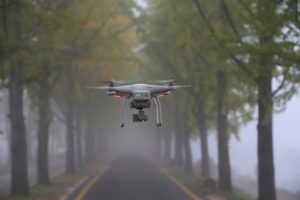In “
Digitise the Skies,” researchers suggest the the U.K. invest £10m “in making recreational aircraft visible to drones” which “would remove major barrier to innovation and set stage for 420,000% return,” says publishers. The paper also suggests that the U.K. drone industry would benefit from the appointment of a a “Minister of Drones.”
The drone economy is set to be worth £42 billion to the UK by 2030, according to a separate report, by PwC. This will not be realised, however, without Government intervention to make all recreational aircraft electronically visible to drones, say Digitise the Skies’ co-authors Sam Dumitriu and Anton Howes.
The problem of small recreational aircraft – manned aircraft – is not unique to the U.K. While most manned aircraft are required to carry systems that communicate their location for air traffic control, smaller – and often older – recreational aircraft are not required to be equipped. This causes a problem for the developers of unamnned traffic management systems, and can put the onus on drone operators to prove that they can identify all other aircraft in the space before they are allowed to share the skies fully.
Now, the Entrepreneurs Network says that in the U.K., it would be worth the cost of simply giving all of the older aircraft the appropriate equipment – just to aid the development of unmanned traffic management systems and unlock the economic potential of commercial drones.
Drones and commercial manned aircraft are made visible to each other and to novel traffic control systems by small onboard electronic devices that communicate their location to minimise the risk of collision. The UK’s 20,000 recreational aircraft, which typically operate in the same sub-10,000ft “Class G” airspace as drones, are not required to be electronically conspicuous – making mass rollout of commercial drone applications unviable on safety grounds – but could be made so at a cost of just £500 each.
“Unmanned passenger transportation is still some way off, but drones have the potential to make an enormous contribution to the UK economy. It’s ridiculous that further testing – and ultimately mass adoption – of potentially hugely impactful applications could be held up or prevented altogether, and the economic benefit lost, as a result of something so trivial,” said Dumitriu, Research Director at The Entrepreneurs Network.
Digitise the Skies says that the one-time cost to the U.K. government would to equip all of the U.K.’s current recreational aircraft with “electronic conspicuity devices” would be about £10 million, but would be quickly recouped if the projections of “a £42 billion drone economy by the end of the decade” are realized.
“The Department for Transport was already offering recreational flyers a 50 per cent rebate on electronic conspicuity devices in a scheme that expires at the end of March – our proposal is merely a low-cost expansion and extension of this to solve an immediate roadblock to important innovation. This would just be toppling the first domino in the chain, but the Government will struggle to find anywhere else where an investment on this scale could deliver such an enormous return at 420,000 per cent,” Dumitriu said.
Miriam McNabb is the Editor-in-Chief of DRONELIFE and CEO of JobForDrones, a professional drone services marketplace, and a fascinated observer of the emerging drone industry and the regulatory environment for drones. Miriam has penned over 3,000 articles focused on the commercial drone space and is an international speaker and recognized figure in the industry. Miriam has a degree from the University of Chicago and over 20 years of experience in high tech sales and marketing for new technologies.
For drone industry consulting or writing, Email Miriam.
TWITTER:@spaldingbarker
Subscribe to DroneLife here.
